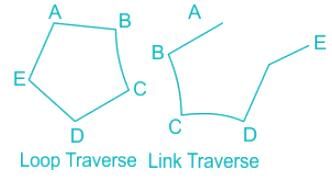Civil Engineering (CE) Exam > Civil Engineering (CE) Tests > Test: Traverse Surveying - Civil Engineering (CE) MCQ
Test: Traverse Surveying - Civil Engineering (CE) MCQ
Test Description
10 Questions MCQ Test - Test: Traverse Surveying
Test: Traverse Surveying for Civil Engineering (CE) 2025 is part of Civil Engineering (CE) preparation. The Test: Traverse Surveying questions and answers have been prepared
according to the Civil Engineering (CE) exam syllabus.The Test: Traverse Surveying MCQs are made for Civil Engineering (CE) 2025 Exam.
Find important definitions, questions, notes, meanings, examples, exercises, MCQs and online tests for Test: Traverse Surveying below.
Solutions of Test: Traverse Surveying questions in English are available as part of our course for Civil Engineering (CE) & Test: Traverse Surveying solutions in
Hindi for Civil Engineering (CE) course.
Download more important topics, notes, lectures and mock test series for Civil Engineering (CE) Exam by signing up for free. Attempt Test: Traverse Surveying | 10 questions in 30 minutes | Mock test for Civil Engineering (CE) preparation | Free important questions MCQ to study for Civil Engineering (CE) Exam | Download free PDF with solutions
Test: Traverse Surveying - Question 1
_______ is the sum of meridian distance of two ends of line.
Detailed Solution for Test: Traverse Surveying - Question 1
Test: Traverse Surveying - Question 2
Co ordinate length measured parallel to an assumed meridian direction may be defined as _________
Detailed Solution for Test: Traverse Surveying - Question 2
Test: Traverse Surveying - Question 3
_________ is a method in the field of surveying to establish control networks
Detailed Solution for Test: Traverse Surveying - Question 3
Test: Traverse Surveying - Question 4
Which method is used for making angular measurements, When triangulation (Triangulation surveying) is not possible?
Detailed Solution for Test: Traverse Surveying - Question 4
Detailed Solution for Test: Traverse Surveying - Question 5
Detailed Solution for Test: Traverse Surveying - Question 6
Test: Traverse Surveying - Question 7
The directions of survey lines are fixed by angular measurements and not by forming a network of triangles. This statement is true for which type of surveying?
Detailed Solution for Test: Traverse Surveying - Question 7
Detailed Solution for Test: Traverse Surveying - Question 8
Detailed Solution for Test: Traverse Surveying - Question 9
Test: Traverse Surveying - Question 10
The magnetic bearing of line AB is 132° 45'. If the magnetic declination is 10° 20'W, the true bearing of the line AB will be
Detailed Solution for Test: Traverse Surveying - Question 10
Information about Test: Traverse Surveying Page
In this test you can find the Exam questions for Test: Traverse Surveying solved & explained in the simplest way possible.
Besides giving Questions and answers for Test: Traverse Surveying, EduRev gives you an ample number of Online tests for practice
Download as PDF




















